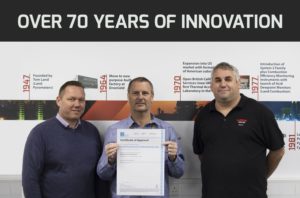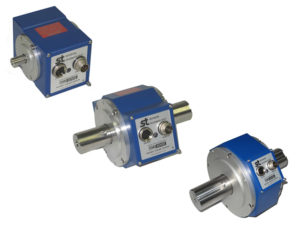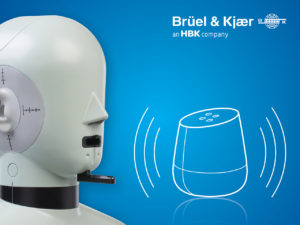AMETEK Land, one of the UK’s leading temperature measurement and combustion monitoring specialists, is celebrating securing two certifications to ISO 14001:2015 Environmental Management Systems and ISO 45001:2018 Occupational Health and Safety Management Systems standards.
AMETEK Land started working toward the new certifications 12 months ago, as both complement the company’s current ISO 9001:2015 Quality Manager Systems standard and would put it in a stronger position when tendering for international contracts.
Alan Tarry, Division Vice President – Operations for AMETEK Land, said: “We’re delighted to have secured these two new certifications, which demonstrate the hard work and dedication of our teams in our UK business. Achieving these standards gives a clear indication that we are committed to both operating sustainably through the use of resources and recycling, as well as with the strongest focus on health and safety.”
Alan adds: “It is very positive to see strong participation across all functions with regards to both safety and environmental management and the increased awareness levels and engagement of our employees.”
AMETEK Land worked alongside health, safety, environmental and quality consultancy HSEQSmart, which provided invaluable support throughout the accreditation process, to ensure the company was ready for the first and second stage audits that took place in August and December 2019.
AMETEK Land achieved the certifications within just a 12-month period, which is testament to the skills of the project team and its employees based in its headquarters in Dronfield. The certification confirms that AMETEK Land — its leadership team and its employees — are committed to the overall safety of both in-house and external processes, products and instrumentation. The company is committed to the well-being and training of its employees and customers, whilst striving to manage the overall environmental impact of the business.
AMETEK Land’s Environment, Health and Safety Manager, Paul Coates, explains: “Environment, health, and safety issues are everyone’s concern within the business, and this is now made evident through these certifications.”
As part of achieving the standards, AMETEK Land set up a Health & Safety Environmental Continuous Improvement Group within its business, consisting of 12 individuals across all departments. Any issues or concerns are shared with the group, which uses best practices to reach an effective solution that is disseminated throughout the business.
As a business, AMETEK Land is committed to helping its customers meet their environmental commitments. One of its latest innovations, the NIR-B Glass borescope, was designed to accurately measure temperatures inside a glass melt furnace. However, this innovation not only leads to the optimisation of glass furnaces, but also to the reduction of NOx emissions in glass production facilities.
In addition, AMETEK Land developed the FGA, a multi-gas analyser that provides an accurate, reliable measurement of carbon monoxide, nitric oxide, and oxygen in flue gases. The FGA also calculates values for combustion efficiency, NOx, and carbon dioxide. This allows for better process control, lowers fuel costs and helps keeps emissions within compliance levels.
ISO 14001:2015 is a certified management system for organisations that want to enhance their environmental performance. As part of its environmental commitments, AMETEK Land has introduced targets for the next 12 months of 5% reduction of electricity and gas usage and targets for reduction of general waste, particularly plastic, with the company recently converting to recyclable cardboard across its packaging.
ISO 45001:2018 is a certified management system for organisations that want to improve occupational health and safety, eliminate hazards and minimize risks. The key components of the ISO 45001 management system that AMETEK Land put into place include business and operational policies, the context of the organisation, leadership commitment, operational monitoring, and improvement, plus overall performance evaluation.
AMETEK Land invested in HSE training for all employees — from directors, through operations, administrative staff and external service engineers — involving around 105 employees in total.

 Instrumentation Monthly Test | Measurement | Control
Instrumentation Monthly Test | Measurement | Control






 There is a dedicated Rotronic microsite for the RMS monitoring solution:
There is a dedicated Rotronic microsite for the RMS monitoring solution: 




